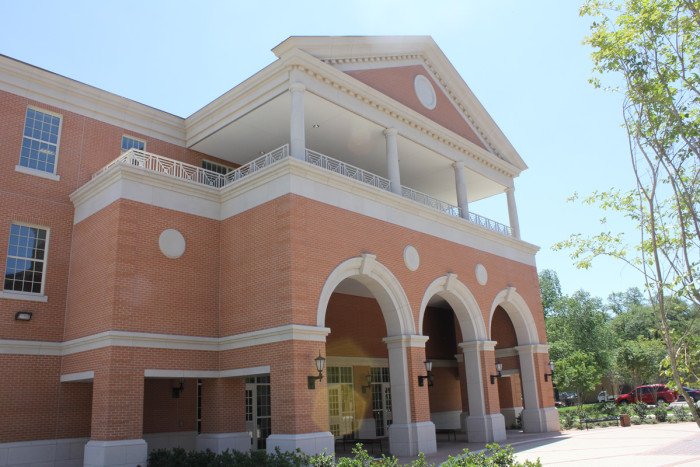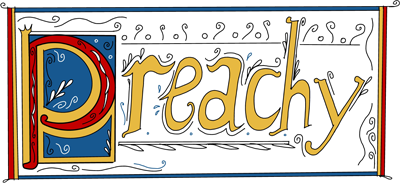
Letting in the Light from Outside
How learning to appreciate other religions changed my Christian faith — and made it stronger
 Scandalized: that’s how my 1994 self would feel were he to time-travel to the present and see me guiding students at TCU or Brite Divinity School through the beliefs and practices of Buddhism, Hinduism, Islam and other religions. It’s a mark of just how far I’ve traveled since that day, 26 years ago, when I took my seat in my first seminary class at Brite. A very green and very evangelical thirtysomething, I was ready to bring the Good News of Christ to a world dwelling in darkness and sin. I didn’t know much about Buddhism or Hinduism or Islam or any religions other than Christianity — and would soon realize how little I knew about that, too. I certainly never envisioned myself teaching about other religions, except perhaps to criticize them.
Scandalized: that’s how my 1994 self would feel were he to time-travel to the present and see me guiding students at TCU or Brite Divinity School through the beliefs and practices of Buddhism, Hinduism, Islam and other religions. It’s a mark of just how far I’ve traveled since that day, 26 years ago, when I took my seat in my first seminary class at Brite. A very green and very evangelical thirtysomething, I was ready to bring the Good News of Christ to a world dwelling in darkness and sin. I didn’t know much about Buddhism or Hinduism or Islam or any religions other than Christianity — and would soon realize how little I knew about that, too. I certainly never envisioned myself teaching about other religions, except perhaps to criticize them.
But it’s not just what I teach nowadays that would shock my young self. It’s also the fact that these religions have become friends—at least to me—companions who speak their own truth and wisdom. Some conservative Christians may see this as apostasy, the religious equivalent of betraying one’s spouse. But that’s not the way it feels to me. Learning to listen to the witness of other religions has been to my Christian faith like throwing open the curtains and letting the light shine in, allowing me to see in new ways what I thought I knew.
In my mid-thirties, a new faith in Jesus had saved me, and not just in the theological sense. To make a long, somewhat soap-operatic story short, faith had delivered me from a time of deep dissatisfaction and depression about the direction my life had taken: a failed first marriage, a career that paid well but left me feeling empty and an aching sense that there had to be more to life than this. After rarely setting foot in a church in my life, I’d joined a neighborhood Lutheran church. There, I found what I’d been missing. The church itself was a simple, plain building, but the small congregation of mostly middle-aged and senior Lutherans, along with their energetic pastor, welcomed me without hesitation into their worship, their Wednesday evening soup suppers, their lives. Just as important, I found a sense of connection to an ancient tradition of Christian worship stretching back through the Middle Ages to the early church. I felt part of something much greater than myself. I plunged into the life of the congregation: When the doors were open, I showed up. During the workday, I spent my lunch breaks sitting in a nearby chapel, praying and reading Scripture. In my spare time, I read everything I could on Christianity.
I was like a young teenager in the throes of puppy love, unable to think or talk about anything but the wonders of their new sweetheart. Christianity gave me a new direction, new hope. I was convinced that Jesus is the way, the truth, and the life and that no one could come to God but through him. I wanted to share that good news with the world. Those around me, including my pastor, agreed that seminary was the next logical step, a way to test a possible vocation in the ministry.
As it turned out, seminary tested much more than that. My first courses at Brite were the theological version of learning to swim by being tossed into deep water without a life preserver. I struggled to cling to my traditionalist preconceptions, but there was no escaping the swirling diversity of Christian thought that had existed from its very beginnings. Christianity isn’t monolithic and never has been. Nor is there just one understanding of salvation, but many, driven by different assumptions about who God is and how God works — and often by cultural assumptions. Claims about “what the Bible teaches” or “fidelity to the tradition” turned out to be debatable and highly dependent on which part of Christianity one belongs to.
While at Brite, I also began dating the woman who would later marry me. Eleanor Forfang had already completed seminary and was working as a painter of Christian art. A few years earlier, she’d traveled to India to study with Bede Griffiths, a Catholic monk who sought to open a dialogue between Christians and Hindus and who explored how Hindu teachings could illuminate Christian theology (and vice versa). Though I was at first skeptical of Bede’s project, Eleanor gently and gradually convinced me of its merits. Sure, we had long talks about theology. But what I found most convincing was her example. Eleanor was and is able to balance a respect, even reverence for Hindu teaching with a deep devotion to the worship life of the Episcopal Church (which I eventually joined) and to the Christian contemplative tradition. A woman of quiet compassion and tolerance, Eleanor helped me see that there is more than one way to follow Christ.
And then along came Kenneth Cracknell. A white-bearded bear of a man, with a ready laugh and a booming British-accented voice (“Hulloooo David!”), Kenneth had recently joined the Brite faculty along with his spouse, professor Susan White. My first course with Kenneth focused on the theology of mission — how to spread the Christian gospel. But Kenneth, himself a former British Methodist missionary, taught that the authentically Christian way to share the faith is to be in sincere, fully mutual dialogue with other religions — dialogue that requires listening to what they have to say, how they witness to the ultimate reality, learning to see how God may already be working in and through them. Both in his teaching and personally, Kenneth embodied, then and now, “good and generous faith.” His example gave me the permission I needed, as someone seeking to live a faithful life, to begin to listen to what other religions have to say.
In several courses with Kenneth, I not only read major Christian theologians, but also classic texts from other religions. I visited a mosque, a Jewish synagogue, a Vietnamese Buddhist temple, two Hindu temples, and a Sikh gurdwhara. These visits showed me how the ancient teachings of the Torah, the Holy Qur’an, or the Bhagavad Gita take flesh today in the lives of my Tarrant County neighbors, who welcomed this outsider into their worship spaces with a warmth and generosity I can only describe as Christlike.
Once I started to accept the witness of other religions as potentially credible, I found myself taking a second look at traditional Christian teachings in light of that witness. Take, for example, the Buddhist doctrine of interdependence, or as Zen teacher Thich Nhat Hanh calls it, “interbeing” (see my book No Longer the Same for other examples). Buddhism holds that nothing exists independently; all beings are interconnected. As Nhat Hanh writes, “I am, therefore you are. You are, therefore I am.…We interare.”
This flies in the face of the individualism that permeates American culture. Though individualism has its benefits (for instance, freedom of — and from — religion), in its more extreme form as “weaponized selfishness,” it stands as a major stumbling block for collective action on gun control, climate change, or COVID-19. And as scholars have noted, American individualism is at least partly rooted in Christian individualism, particularly in forms of Protestantism that, as scholar Robert Bellah writes, place a “near exclusive focus on the relation between Jesus and the individual, where accepting Jesus Christ as one’s personal Lord and Savior becomes almost the whole of piety.”
Is Christianity inherently individualistic, or have we overlooked something similar to interbeing in our own scriptures and tradition? I devoted a 2013 book to addressing that question, not only in itself but also in its political implications. I found that the Christian tradition has overemphasized the Bible’s individualistic strands at the expense of biblical teachings that suggest our interconnectedness with others. Drawing on Jesus’ metaphor in John 15:5, my book concludes, “We are, after all, the branches of one vine. We flourish or we perish together.” Though I reached that conclusion without reference to Buddhism, it was my study of interbeing that led me to ask the question in the first place.
Much of my work since completing a Ph.D. in religious studies has been concerned with defending the rights of non-Christians against those Christians who think their own beliefs should be the norm for everyone else. No Longer the Same examines how Christians’ ways of thinking about other religions can close us off from the witness of those religions — and perhaps blind us to what our God may be saying through them. I’ve also written about forms of conservative Christianity that use the faith as a weapon — movements like Islamophobia, dominionism, and Christian nationalism that threaten the freedom and equality of members of other religions as well as the non-religious.
In the course of my teaching life, I occasionally come across students who sincerely believe that they possess the one, absolute, unchanging truth about God and salvation. I sympathize: Been there, done that, bought the T-shirt. I don’t try to convert them to my own view. After all, maybe they’re right and I’m wrong. Who knows, apart from God?
The best I can do is raise a few questions, point them to some texts that I’ve found illuminating, expose them to what other religions have to say, and let them find their own way, as I did. And as others did for me, I give them permission to open the window and let in the light from outside.
David R. Brockman, Ph.D., a religious studies scholar and Christian theologian, is a nonresident scholar in the Religion and Public Policy Program at Rice University’s Baker Institute. He also teaches at Brite Divinity School and Texas Christian University. His articles have appeared in Texas Observer, Religion Dispatches, Scalawag, and other publications. He is the author of No Longer the Same: Religious Others and the Liberation of Christian Theology (2011) and Dialectical Democracy through Christian Thought: Individualism, Relationalism, and American Politics (2013).
